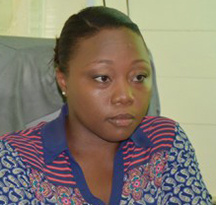Medication for malaria is unavailable at several health centres in Guyana’s interior, resulting in patients having to travel lengthy distances for treatment, according to Guyana Women Miners Organisation (GWMO), which has been seeking the intervention of the Ministry of Public Health to address the situation.
In an invited comment to Stabroek News, head of the Vector Control Agency Dr. Horace Cox said the National Malaria Programme is not aware of the unavailability of medication at the sites before noting that there are specific mechanisms in place to detect and correct such situations.
Nevertheless, he has offered the assurance that the National Malaria Programme will look into these details with urgency.
With regard to the request made by the GWMO, Cox said, “the National Malaria Programme/Vector Control Unit will be having a mass distribution of 92,009 Long Lasting Insecticide treated nets (LLINs) to the stable and mobile populations of regions One, Seven, Eight and Nine over a two-day period by June, 2018. LLINs are the main vector control intervention in the fight against the Anopheles mosquito. Before and after the mass distribution exercise, residents of these four regions in need of nets should check with the Regional Malaria Departments for any LLINs which may be needed. The Malaria Clinic, GPHC also issues LLINs upon request,” he said.
In a letter to Minister of Public Health Volda Lawrence, dated January 15th, 2018, GWMO President Urica Primus made a request for 200 treated mosquito nets, which would be distributed to members of the organisation who reside in communities with notable malaria rates.
“In an effort to ensure the safety of our miners and their staff, with the notable rate of malaria and other diseases carried by the mosquitos, we are kindly requesting for the provision of two hundred treated mosquito nets. The requested nets will aid in lowering the probability of miners being affected by such diseases and possibly save the lives of miners,” the letter stated.
Not having received any acknowledgement from the minister, the GWMO sent another letter, dated March 8th, in which it highlighted the unavailability of malaria treatment in regions 1, 7, 8 and 9.
It noted that through its networks it had learnt that there is a scarcity of malaria treatment in regions One, Seven, Eight and Nine and specifically at the hospital at Port Kaituma, the Imbaimadai Health Cente, the Aishalton and Achiwuib clinics, and at 48 Miles, 58 Miles and Great Falls.
“Miners who are suffering from this disease are forced to journey extreme distances from their communities to private clinics or pharmacies in order to acquire treatment. This journey is always unpleasant to a distraught patient and sometimes detrimental,” the letter added.
It reminded of its previous request for nets and asked that it be treated with urgency, while offering to assist wherever possible.
A subsequent letter on March 23rd identified the health centre at Issano, in Region Seven, as also being affected.
In that correspondence, it also requested an update on its original request as well as feedback on the provision of treatment to the communities outlined in the previous letter.
A member of the GWMO who spoke to Stabroek News said that as of Wednesday afternoon the organization had not received even an acknowledgement of the letters. The woman noted that based on information received, the ministry would have recently completed a malaria outreach in the Region Nine after a reported outbreak in Marudi.
However, the organisation does not feel the outreach was sufficient since available treatment in the area would diminish overtime and the situation will recur.
Commenting on the lack of treatment in the other regions, the woman noted that in the case of miners in Issano, they would have to either venture to Bartica or beyond to seek treatment or request medication from relatives in Georgetown.
In the case of persons working and residing in Port Kaituma, they depend on medication from the community’s only pharmacy, which according to the woman is only accessible to those who can afford to purchase the medication there.






